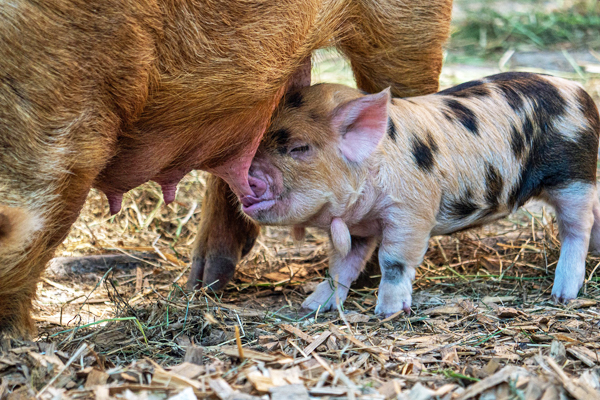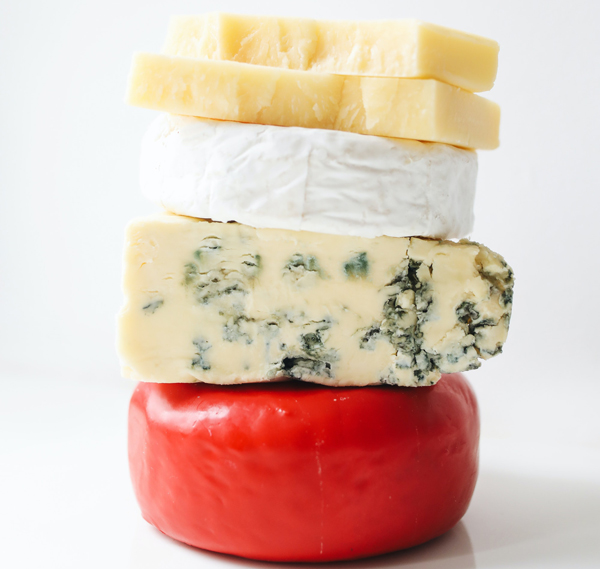How to Make Sure You Get Enough Calcium
Calcium is a very important mineral in the human body. Here’s how to make sure you get enough calcium. Plus 17 foods that are great sources of calcium. And a few that are not.
. . . plus 17 foods that are great sources of calcium.
Calcium and Bone Health
Calcium is a very important mineral in the human body. Our bones need this mineral to make them strong and for bone re-calcification. Calcium is also needed for many other tasks including nerve and muscle function and blood clotting. These other tasks are so important for survival, that, when dietary calcium is too low, this mineral will be lost from the bones and used for other critical functions.
Indeed, calcium comprises a crucial aspect of human health.
Is dairy milk the best source of calcium?
An increasing amount of research challenges the idea that dairy milk is the best source of calcium and, in fact, shows that the consumption of dairy products does much more harm than good.
There are many health problems strongly associated with the use of dairy products such as asthma, appendicitis, digestive problems, ear and tonsillar infections, acid reflux, anemia, depression, chronic fatigue, bronchitis, intestinal irritation, intestinal bleeding, allergies, heart disease, arthritis, sinusitis, leukemia, lymphoma, cancer, diabetes, strep throat, ulcerative colitis, Crohn’s disease, cataracts, irritable bowel syndrome, eczema, and obesity.
Milk is a natural food… isn’t it?

All mammals drink the milk of their mothers until they are weaned. However, unlike all other mammals, humans place themselves in the odd position of being the only animals that consume milk after weaning and continue to drink milk into adulthood. And not only that, we drink the milk of another species!
Don’t children need milk for healthy bones?

No. What they do need is exercise and a healthy plant-based diet. A scientific review on dairy products and bone health (Lanou et al., Pediatrics 2005) showed that there is very little evidence to support the consumption of dairy products in children and adults in order to promote bone health. This review examined the effects of dairy products and calcium on bone strength in children and young adults and found that physical exercise is the most critical factor for maintaining healthy bones, followed by improving the diet and lifestyle.
The link between cow’s milk and type 1 diabetes
Early exposure to cow’s milk and baby formula made from cow’s milk has been linked to an immune response that can lead to type I diabetes in some children. The immune response involves the body’s immune system reacting to a trigger (which may be cow insulin or a protein called casein from cow’s milk). Structural similarities between the triggering molecule and the insulin-producing pancreatic beta cells confuse the human immune system and it attacks the cells in the pancreas. This hinders the ability of the pancreas to produce insulin and may lead to diabetes.
Studies show that the avoidance of cow’s milk during the first few months of life reduces the risk of type I diabetes in children.
Doesn’t cow’s milk protect against osteoporosis?
Most people believe that calcium prevents bone loss, but numerous studies show that high doses of calcium do not slow bone loss.
Statistics show that countries that have the highest milk consumption also have the highest rates of osteoporosis.

American women are among the largest consumers of milk in the world yet they have one of the highest levels of osteoporosis in the world, while some African cultures consume no dairy products at all and typically get only 200 to 475 milligrams of calcium per day from vegetable sources, and yet osteoporosis is almost unheard of.
Increasing milk consumption does not protect against bone fracture, and an increased intake of dairy products actually increases the risk of bone fracture.
Animal protein promotes calcium loss

Researchers studied close to 78,000 women and 43,000 men and found that higher intakes of calcium-rich foods during the adult years did not reduce risk of fractures. Summarizing this study, the Lunar Osteoporosis Update explained: “This increased risk of hip fracture was associated with dairy calcium. . . . If this were any agent other than milk, which has been so aggressively marketed by dairy interests, it undoubtedly would be considered a major risk factor.”
Another study, funded by the National Dairy Council, involved giving a group of postmenopausal women three 8-ounce glasses of skim milk per day for two years and comparing their bones to those of a control group of women not given the milk. The dairy group consumed 1,400 mg of calcium per day and lost bone at twice the rate of the control group. (Needless to say, this finding did not reach the prime-time news.)
Studies show that calcium loss from the bones is promoted by high intakes of animal protein (including that found in dairy products). By the age of 80, vegetarians tend to have lost less bone mineral compared to omnivores. Cross-cultural studies show strong links between a high animal protein diet, bone degeneration, and the occurrence of hip fractures.

In fact, studies showed that when young adults had a protein intake of 48 grams per day (slightly lower than the current RDA) they had no net loss of calcium, even though the amount of this mineral in their diet was as low as 500 milligrams daily.
Get everything you need to know about healthy, non-dairy milk options here.
What other factors increase the risk of osteoporosis?

Other factors which increase the risk of osteoporosis include heredity, nicotine use, alcohol consumption, caffeine consumption, Caucasian or Oriental race, steroid use, early menopause, regular consumption of processed foods, prolonged immobilization, and inadequate vitamin D.
What factors are important for bone health?

Physical activity and regular weight-bearing exercise are key factors in reducing osteoporosis risk. In addition, it is important to get enough vitamin D from the sun.
What foods, besides milk, contain calcium?
While milk and dairy products do contain calcium, plant-based sources are much healthier and can be used better by the body.
Good plant-based sources include green leafy vegetables such as kale, spring greens, broccoli, cabbage, parsley, okra, and watercress. There is as much calcium in 3/4 cups of collard greens as there is in one cup of cow’s milk.
Nuts, particularly almonds and Brazil nuts, and seeds, including sesame seeds and tahini, are also rich in this mineral. Other great sources are dried fruits such as figs, dates, and apricots. Most legumes (which includes peas, beans, and lentils) are also good sources. At 150 mg of calcium per one cup, garbanzos are especially high in calcium.
A healthy, plant-based diet maintains excellent calcium balance because ALL vegetables and legumes contain calcium, and collectively the amount obtained is more than adequate. This calcium – the calcium in plant-based sources – stays in the bones, unlike much of that from the high protein-containing dairy products.
Are there foods that help with the absorption of calcium or otherwise strengthen bones?
Yes. Foods rich in copper (sesame seeds, tahini, cashews, sunflower seeds, hazelnuts, peanuts, Brazil nuts, walnuts, grape leaves, fresh basil, radicchio, turnip greens, potatoes, asparagus, Swiss chard, and beet greens) assist in the formation of bones.
Foods rich in manganese and vitamin A also aid in the metabolism of calcium.
Manganese can be found in hazelnuts, teff, rye crackers, oats, pecans, macadamia nuts, brown rice, walnuts, fresh basil, okra, pineapple, lambsquarter greens, grape leaves, wild blueberries, and green beans among other foods.
Vitamin A is abundant in leaf lettuce, kale, carrots, pumpkin, mustard greens, turnip greens, broccoli (especially the leaves), cabbage, Swiss chard, grape leaves, watercress, beet greens, winter squash, and collard greens among other foods.
Factors involved in calcium absorption
The body carefully regulates its calcium absorption. The average person absorbs 30 to 70 percent of the calcium he or she eats. The more calcium taken in, the less the body will absorb. This is to protect the body from overdosing on calcium.
The calcium in dairy products is not absorbed into the body as easily as that in many dark green leafy vegetables, such as kale.
Grains, nuts and seeds contain a substance called phytic acid which until recently was also considered to hinder calcium absorption; however phytic acid is now believed to have only a minor influence. Furthermore, when grains are properly cooked the phytic acid is no longer an issue.
Vitamin D, which is made in the skin following exposure to sunlight, greatly aids in calcium absorption. (Fair skin allows the production of Vitamin D from sunlight more readily than does dark skin.) Without sufficient vitamin D, calcium deficiency is likely to occur even if the diet provides an abundance of calcium.
Furthermore, magnesium, potassium, vitamin C, and vitamin K, are all required for good bone health. A healthy diet that includes at least five servings a day of fruit and vegetables will optimize the intake of these and other micronutrients required.
Was This Helpful to You?
If this information has been helpful to you, consider giving a donation so we can continue to provide unbiased information for you and keep ads off the site.
Disclaimer
The information in this article is for educational purposes only. It is not as a substitute for medical diagnosis or treatment.
You my also like:
Before you go . . .
Did you know that you can eat all this delicious food AND lose weight? You can!
No calorie counting. No portion sizes.
Join my online weight loss program today!






Hello-
Can you share recipes for vegan cheese
sauce and vegan cheeses WITHOUT nutritional yeast? (Allergy to nooch here!)
THANKS!!
Hi Martha,
Here are all my vegan cheese recipes. Most of them are nutritional-yeast-free.
https://jenniferskitchen.com/category/recipes/vegan-cheese
Enjoy!
Jennifer